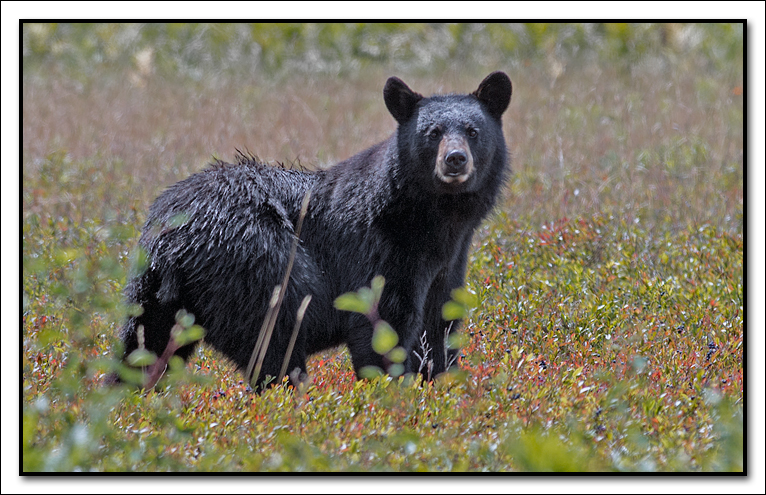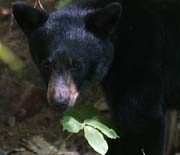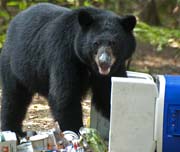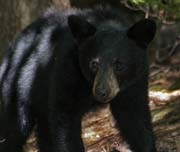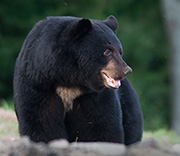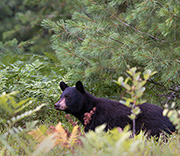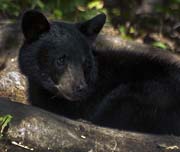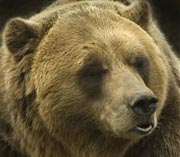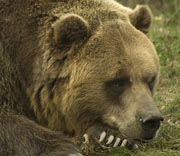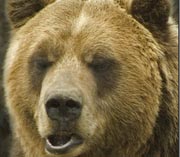
American Black Bear (Ursus americanus)
Although Black Bears may look scary to some, they have been a symbol of cuteness for many centuries. Often a child's first toy is a teddy bear. We have Pooh Bear, Rupert, Yogi, Boo-Boo, Paddington Bear, Bernstein Bears and Care Bears. Bears may be one of Ontario's largest carivore, but their diet is actually 90% vegetarian. Bears are generally solitary creatures that require large territories for forageing.
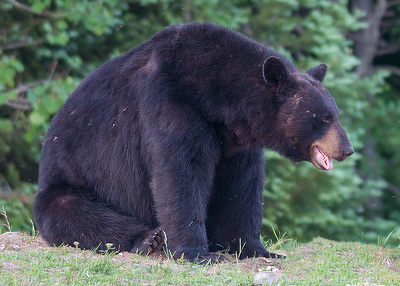 Black bears are are opportunist and will eat almost anything available. Most of their food is plant material, especially in the late summer and autumn when berries and nuts are available. Insects such as ants rate high, and black bears will overturn logs, old stumps, and stones while hunting for food. Fish, small mammals, and birds are sometimes on the black bear’s menu.
Black bears are are opportunist and will eat almost anything available. Most of their food is plant material, especially in the late summer and autumn when berries and nuts are available. Insects such as ants rate high, and black bears will overturn logs, old stumps, and stones while hunting for food. Fish, small mammals, and birds are sometimes on the black bear’s menu.
Black bears have non-retractable claws that give them excellent tree-climbing abilities. These are very strong and are also used for digging and tearing out roots, stumps, and old logs when searching for food. They have flexible lips and a long tongue to help gather smaller fooe items like berries, grubs and insects.
Although it was once assumed that black bears have poor eyesight. This could be because of their amazing sense of smell which they tend to rely on. They have decent vision, especially up close. They also have excellent night vision. Their hearing is superior to humans. Between their superior senses of smell and hearing, black bears usually notice humans before we see them.
Bears can run as fast as a horse (35 mph), and they can do it uphill, downhill, and everything in between. We once seen a small bear swim across a river in front of our canoe and then climb a cliff using downed trees and rocks at an incredible speed. Despite of their large bodies and thick fur, they are excellent swimmers.
HABITAT
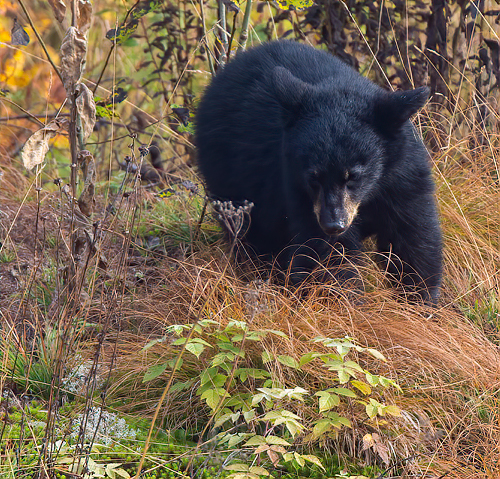 Historically, American black bears occupied the majority of North America's forested regions. Today, black bears can be found in every province and territory in Canada except Prince Edward Island. Their current range also includes most of the norteast U.S. states, northern midwest and Western coast and mountain ranges to Alaska.
Historically, American black bears occupied the majority of North America's forested regions. Today, black bears can be found in every province and territory in Canada except Prince Edward Island. Their current range also includes most of the norteast U.S. states, northern midwest and Western coast and mountain ranges to Alaska.
Although found in a variety of habitats, the black bear prefers heavily wooded areas and dense bushland. Maximum numbers probably occur in areas of mixed coniferous–deciduous forests, where human presence is low. However, they can also easily develop a taste for human foods and garbage.
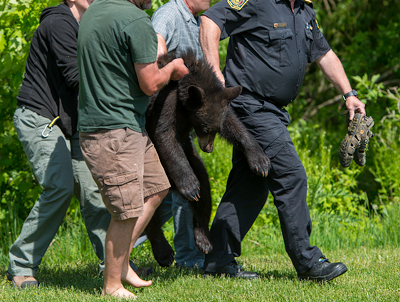 This bear pictured on the right wandered into a town park in Kincardine Ontario and was humanely relocated. Bears who become habituated to human food at campsites, cabins, or rural homes can become dangerous and are often killed, which is why we have to remember the common phrase : Please don't feed the bears!
This bear pictured on the right wandered into a town park in Kincardine Ontario and was humanely relocated. Bears who become habituated to human food at campsites, cabins, or rural homes can become dangerous and are often killed, which is why we have to remember the common phrase : Please don't feed the bears!
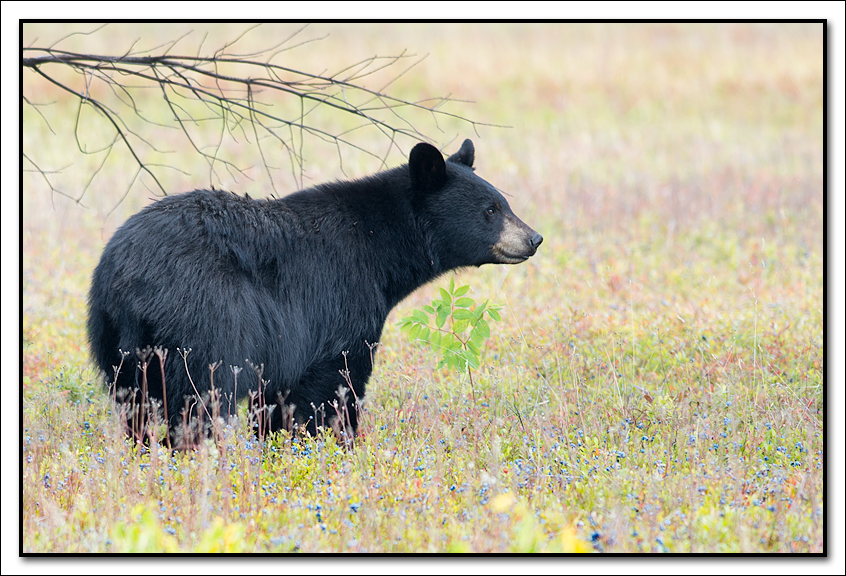
In Ontario, during August to October, bears start to fatten up for winter hibernation. They can spend up to 20 hours a day devouring high fat food like tree nuts and berries. When the days become shorter, bears begin searching for a suitable denning site. This could be under a tree stump, under logs or in a whole in a hillside.
However, black bears are not true hibernators, and most bears can be roused if disturbed. They could also wake up and wander around for short periods if the weather becomes exceptionally warm during the winter months.
Black bears are solitary animals, except for the close bond between females and cubs and the pairing that takes place during the mating season. Mating is in June or early July, and the cubs are born the following January or February while the mother is still in her winter den.
